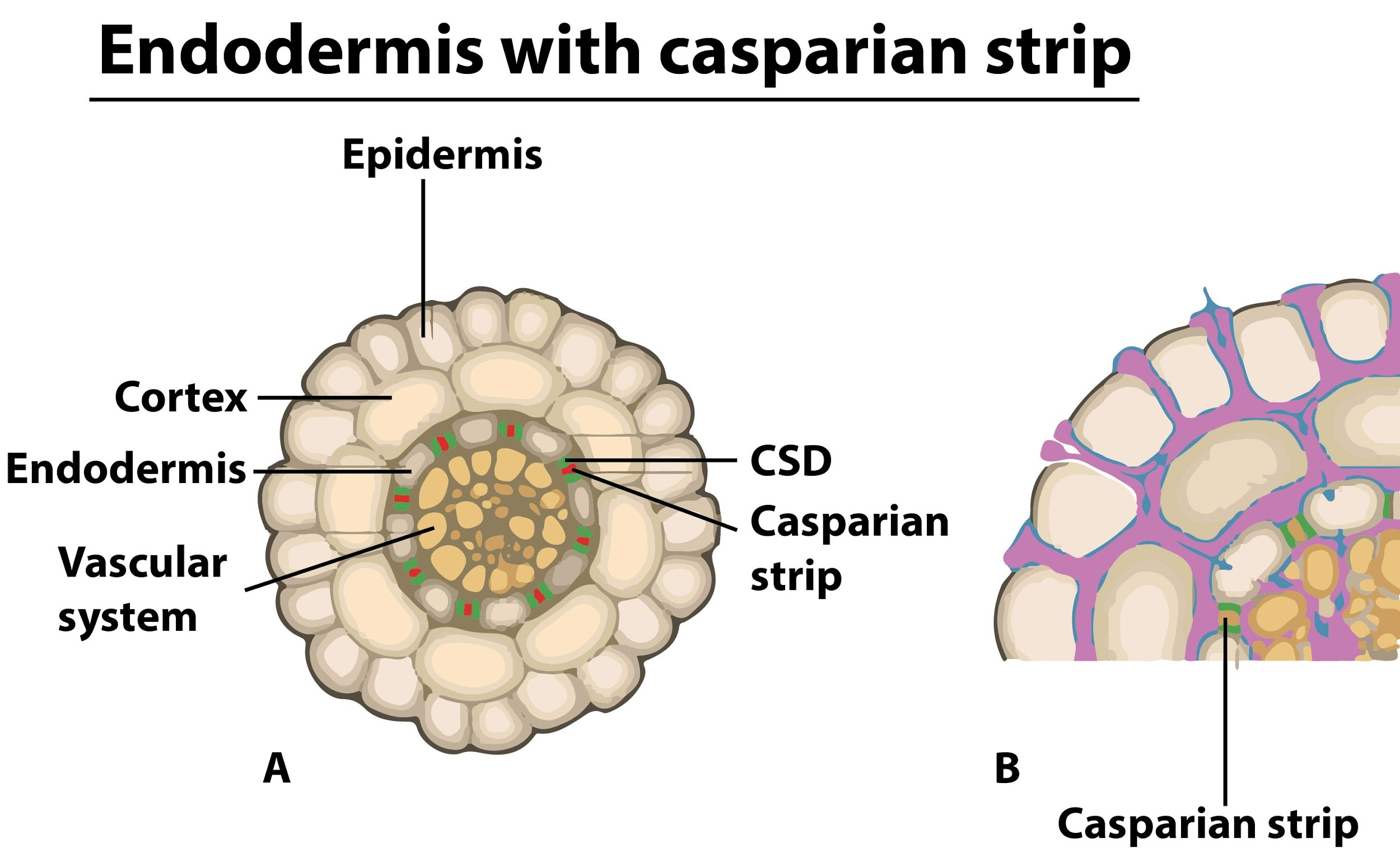
Casparian strip occurs in
(a)Pericycle
(b)Endodermis
(c)Epidermis
(d)Cortex
Answer
573k+ views
Hint: It is the central, innermost layer of the cortex in land plants that contains Casparian strips. This part of the plant is cylinder-shaped and composed of compact living cells and the radial walls of these are water-resistant.
Complete answer:
Casparian strips occur in the Endodermis. It is a cell wall material that is deposited in the radial and transverse walls of the endodermis of roots. It is made up of suberin and sometimes of lignin. It regulates the water and mineral uptake by the roots.
Additional Information: - The Casparian strip is named after Robert Caspary.
-The Casparian strip is a waterproof tissue.
-The Casparian strip prevents the water from entering the pericycle except through the cytoplasm of endodermal cells and is important in producing root pressure.
- It also prevents excess soil solution from being pulled directly into the central part of the root where the xylem is located.
-Endodermis cells are also known as the passage cells.
-Active absorption occurs through the osmosis, or the use of active transport, to move molecules of a solute against the concentration gradient, forcing water into the cells of the root hairs. Passive absorption is absorption by the pull from transpiration without the active involvement of the root cells.

So, the correct answer is, ‘Endodermis.’
Note: In many seedless vascular plants, the endodermis is a distinctly visible layer of cells immediately outside the stele (the central part of the root or stem). In most of the seeded plants, especially woody types, an endodermis is absent from the stems but is present in roots.
Complete answer:
Casparian strips occur in the Endodermis. It is a cell wall material that is deposited in the radial and transverse walls of the endodermis of roots. It is made up of suberin and sometimes of lignin. It regulates the water and mineral uptake by the roots.
Additional Information: - The Casparian strip is named after Robert Caspary.
-The Casparian strip is a waterproof tissue.
-The Casparian strip prevents the water from entering the pericycle except through the cytoplasm of endodermal cells and is important in producing root pressure.
- It also prevents excess soil solution from being pulled directly into the central part of the root where the xylem is located.
-Endodermis cells are also known as the passage cells.
-Active absorption occurs through the osmosis, or the use of active transport, to move molecules of a solute against the concentration gradient, forcing water into the cells of the root hairs. Passive absorption is absorption by the pull from transpiration without the active involvement of the root cells.

So, the correct answer is, ‘Endodermis.’
Note: In many seedless vascular plants, the endodermis is a distinctly visible layer of cells immediately outside the stele (the central part of the root or stem). In most of the seeded plants, especially woody types, an endodermis is absent from the stems but is present in roots.
Recently Updated Pages
Master Class 11 Social Science: Engaging Questions & Answers for Success

Master Class 11 Physics: Engaging Questions & Answers for Success

Master Class 11 Maths: Engaging Questions & Answers for Success

Master Class 11 Economics: Engaging Questions & Answers for Success

Master Class 11 Computer Science: Engaging Questions & Answers for Success

Master Class 11 Chemistry: Engaging Questions & Answers for Success

Trending doubts
What is meant by exothermic and endothermic reactions class 11 chemistry CBSE

10 examples of friction in our daily life

One Metric ton is equal to kg A 10000 B 1000 C 100 class 11 physics CBSE

1 Quintal is equal to a 110 kg b 10 kg c 100kg d 1000 class 11 physics CBSE

Difference Between Prokaryotic Cells and Eukaryotic Cells

Discuss the various forms of bacteria class 11 biology CBSE




